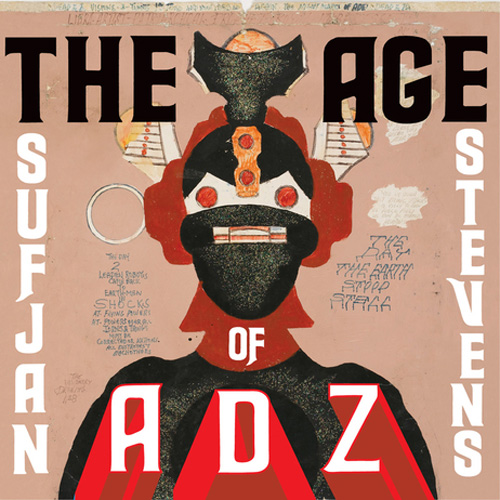Videos by American Songwriter
Sufjan Stevens
The Age of Adz
Asthmatic Kitty
[Rating: 3.5 stars]
If you couldn’t tell from the title, Sufjan Stevens’ first full-length album in five years is decidedly not an ode to a state. That project, which delighted the choir while exasperating the practical nonbelievers, seems to be pretty well buried. In fact, he admitted to the Guardian last year that it was an unabashed ‘promotional gimmick’ and told Paste that the project was ‘such a joke’. Well, we all knew that in our heart of hearts, but mostly just hadn’t wanted to admit it. Maybe it’s for the best, though. The Age of Adz is a far cry from Michigan or Illinois, but it sounds like a natural progression for Stevens, evidence of an evolving perspective that seems only possible after this much remove from his Fifty States Project, and certainly only after his first foray into electronic experimentation, 2001’s Enjoy Your Rabbit.
The Age of Adz builds on his previous dabblings in electronica by integrating the ideas he has clearly been stewing with the aspects of his work so dear to fans. Opener “Futile Devices” eases the listener into the record with a soft, breathy track reminiscent of the Stevens you remember from five years ago. As lovely as it is, however, it almost seems insincere in the context of what comes next. Second track “Too Much” breaks the mood with what sounds like underwater video game explosions that develop into a charming pop song underlaid with an electronic chugging that all but the most devoted fans will be surprised to hear. And it only gets weirder from there, as the album circles and swoops around strange noises and fuzzy backgrounds.
That’s not to say that there isn’t a lot to love, and the relative difficulty of the album ultimately makes it a rewarding re-listen. The soaring soundscapes and sweeping seraphic melodies that characterize Stevens’ earlier work are still in play here; it’s as if Stevens has discovered a whole new set of sonic building blocks, and he juxtaposes samples and loops with his strings and woodwinds to create a tapestry just as grand as the more traditional orchestral movements of Illinois. The most successful songs, like “I Walked” and “Vesuvius”, manage to synthesize Stevens’ gorgeous folk melodies and buttery boyfriend voice with his new perspective of blips and ambience.
The album’s title is a reference to the art of Royal Robertson, a “black Louisiana-based sign-maker (and self-proclaimed prophet) who suffered from schizophrenia, and whose work depicts the artist’s vivid dreams and visions of space aliens, futuristic automobiles, eccentric monsters, and signs of the Last Judgment.” The CD booklet, if anyone were to ever see such an anachronistic item, is filled with Robertson’s drawings, childish and profound at once. And yes, very concerned with space, strange landscapes and magical beasts, a selection of otherworldly tropes that fits with the wide spaces and art-rock feel of this album.


3 Comments
Leave a Reply